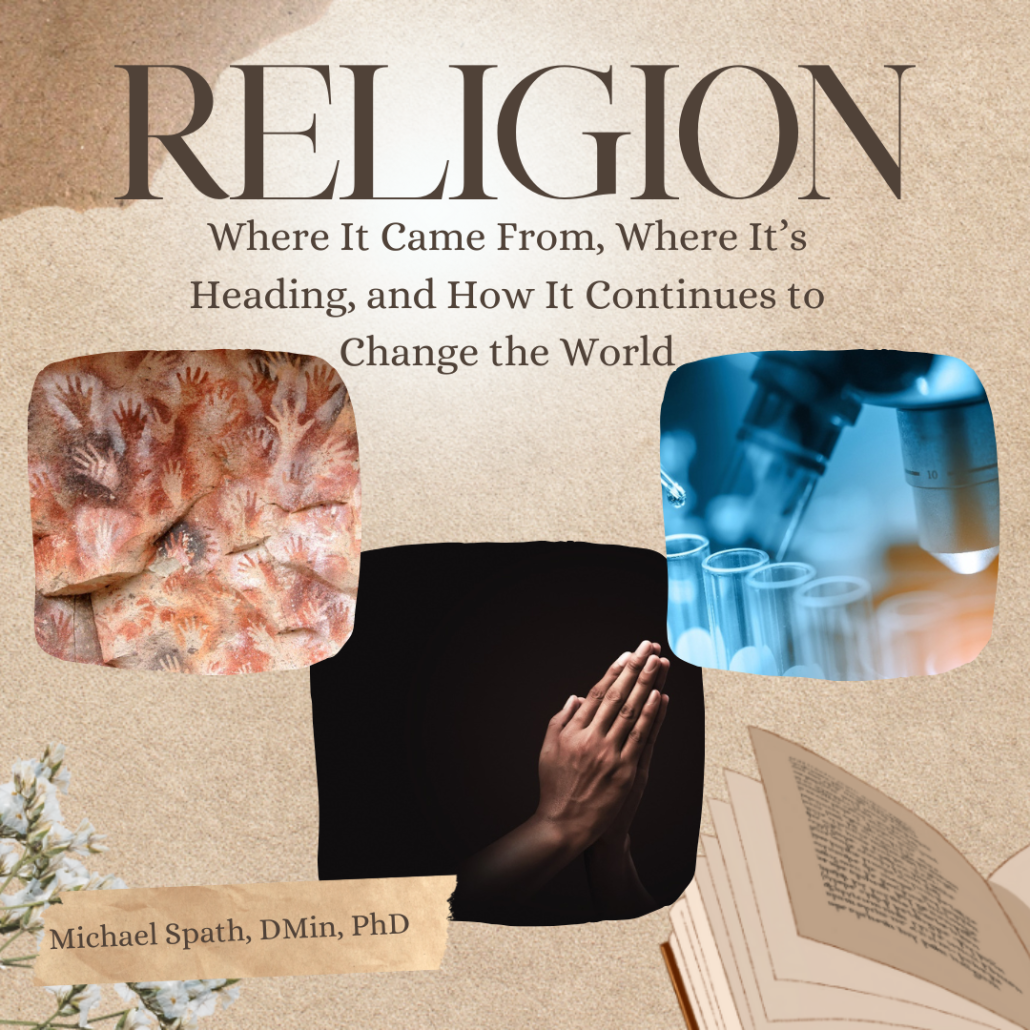
During April, we hosted a three-part series on the past, present and future of Religion presented by Dr. Michael Spath, executive director of the Indiana Center for Middle East Peace. These well-attended presentations were held in the Jennings Auditorium at the Greencroft Community in Goshen – the first time we hosted an event outside of Syracuse.
You can watch a replay of each presentation on the Chautauqua Wawasee YouTube channel by pressing HERE.
During the first session, Dr. Spath explained how during the Paleolithic period our ancient ancestors associated women with the mystery of creation.
Blood was the basis of clanship. Through birth, women were transmitters of the clan’s blood and its spirit. Menstrual blood was used to fertilize fields in the Spring and used in healing. Women were responsible for the harvest because they knew the mystery of creation. They were the personified symbol of all life – the embodiment of all nature and the generative powers of the Earth including the cycle of fertility, creation, growth, preservation, and death. Mother Earth.
During the second session, Dr. Spath explained many of the common themes found in the religions developed during the axial age (800-200 BCE).
With urbanization, power shifted from the priest and king to the marketplace with greater social inequality and economic exploitation. In addition, Iron Age wars created chaos. In response to these trends, religions began to call people to seek higher community goals and inward reality. Cooperative behaviors (compassion and charity), sexual behaviors (chastity and monogamy), economic behaviors (condemnation of conspicuous consumption and greed) and parenting behaviors (investment in children) originated during the axial age. Humans were also becoming self-conscious. Increased urbanization led to a crisis of individuation – no longer members of a clan, we became individuals who coexist in an urban setting with people from different backgrounds
This led to:
- a crisis of morality – no longer shared norms, we have to negotiate new norms
among diverse crowds with a focus on ethics, empathy, and individual rights; - a crisis of meaning – the individual must look inward to answer the questions of
purpose and meaning; and - a crisis of mortality – without the presence of tribal ancestors, when the unique
individual dies, what happens next?
During the third session, Dr. Spath discussed the future of religion in these post-modern times as people are looking for new narratives. Pre-modern thought considered religion as science and myth as fact and history with a focus on tribal consciousness. Modern thought shifted to individualized consciousness in response to the Enlightenment and modern science. With increased globalization, Post-Modern thought embraces pluralism, multiculturalism and diversity, with a heightened Earth consciousness.
Will religion’s new story be a story of human dignity and compassion, a story embracing all sentient beings as sacred, a story of awe, and a story that celebrates our love affair with our mother, the Earth?
Again, you can watch a replay of each presentation on the Chautauqua Wawasee YouTube channel by pressing HERE.
